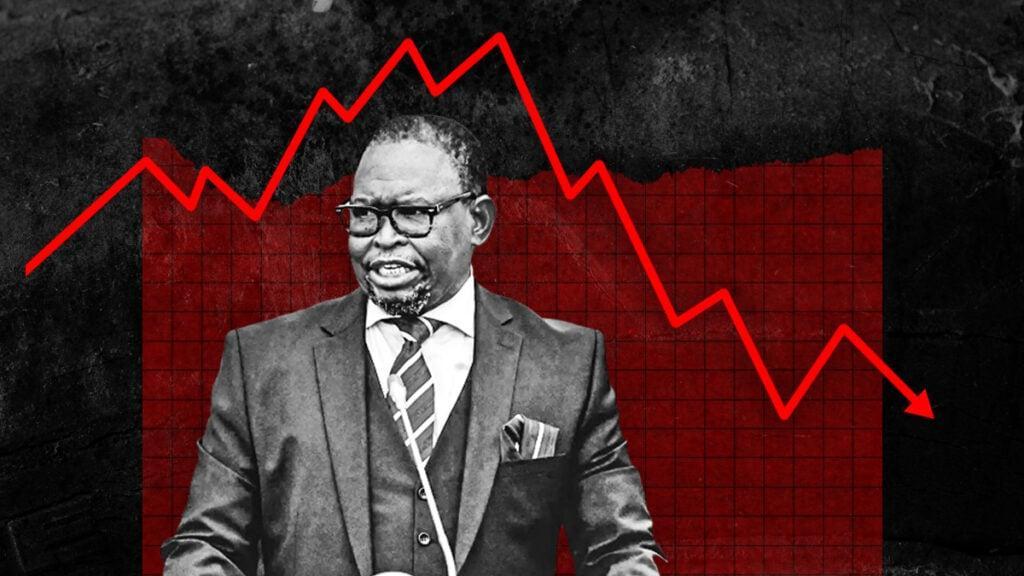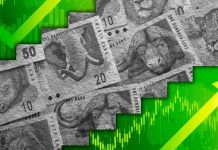Africa-Press – South-Africa. Finance Minister Enoch Godongwana’s forecast that South Africa’s real economic growth will increase to 1.9% in 2025 is misguided and will leave a big hole in the 2025 Budget.
The National Treasury’s 2025 Budget Review stated that unanticipated weaknesses in agriculture and transport caused lower-than-expected growth in 2024.
It painted a much rosier picture for the next three years, projecting average economic growth of 1.8% from 2025 to 2027.
It expects continued recovery supported by improved investor confidence, stable electricity supply, lower interest rates, and a declining risk premium.
“Continued implementation of structural reforms is essential to accelerate growth, supported by macroeconomic stability, infrastructure investment, and a capable state,” it said.
Based on its economic growth forecasts, the National Treasury expects the budget deficit to narrow to 3.5% of GDP over the medium term.
“Crucially, the debt-to-GDP ratio will stabilise at 76.2 per cent in 2025/26, declining thereafter,” the National Treasury said.
“These are important milestones, but more is needed to change South Africa’s economic and policy trajectory, particularly given growing external risks.”
This sounds encouraging, but there is a problem. The National Treasury is the only organisation which expects such high economic growth for South Africa.
The International Monetary Fund (IMF) cut its economic growth forecast for South Africa to just 1%, as US President Donald Trump’s tariffs wreak havoc on financial markets.
Before Trump’s tariff announcement, there were hopes that Eskom’s improved performance and the Government of National Unity (GNU) could elevate economic growth above 2%.
However, the IMF said that the economic shock stemming from the tariffs has led to downward revisions for almost all countries.
This was all revealed in the IMF’s April update to its World Economic Forecast on Tuesday, 22 April, its first update since Trump’s tariffs were announced.
At its recent Monetary Policy Committee (MPC) meeting, the Reserve Bank also cut South Africa’s economic growth in 2025 from 1.8% to 1.7%.
In its statement, the MPC said that there are downside risks to South Africa’s economic growth, meaning that growth may be revised lower again in the future.
Economist Dawie Roodt’s economic growth forecast
Efficient Group chief economist Dawie Roodt
Efficient Group chief economist Dawie Roodt said South Africa’s economic growth this year will be lower than initially anticipated.
He started the year expecting GDP growth of 1.5%, which aligns with population growth in South Africa. “However, a few new headwinds appeared,” he said.
These headwinds include United States tariffs, South Africa losing its AGOA benefits, and the instability of the government of national unity (GNU).
These factors and a potential global recession will negatively impact South Africa’s economic growth in the medium term.
Roodt said that, in the best-case scenario, South Africa should expect around 1% economic growth. However, with further headwinds, it can be much lower.
“This growth is very bad, as the finance minister depends on economic growth to fund South Africa’s large state machinery,” he said.
Without the National Treasury’s expected 1.9% economic growth, the country will not meet its planned revenue collection.
If the South African economy grows only by 1%, as the IMF and Roodt expect, the 2025 Budget will have a big hole.
The government’s deficit will be higher than anticipated, forcing the state to borrow more money and further increase the already-high debt-to-GDP ratio.
To resolve this downward spiral, South Africa needs to improve state efficiency and implement policies to encourage economic growth.
“Unless this is done, South Africans will continue getting poorer and rich people will continue to leave due to a lack of opportunities,” he said.
For More News And Analysis About South-Africa Follow Africa-Press






